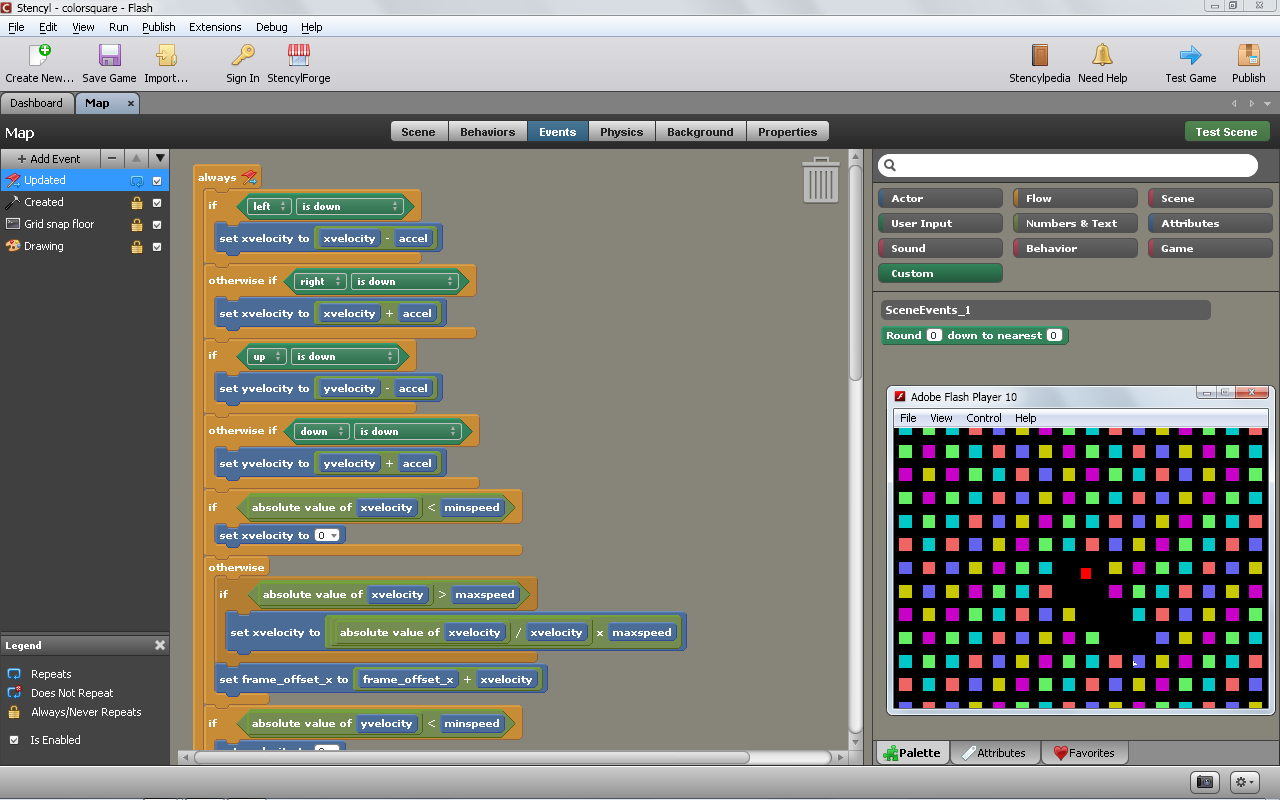Комментарии 12
Даже не знаю что больше вызывает отторжение — программирование этими фигурками или русскоязычный синтаксис)
+3
У каждого свой вкус. И все мы с чего-то начинали)
Кстати «там» делают целые курсы по введению в основы программирования, на базе таких визуальных систем: Beauty and Joy of Computing
Кстати «там» делают целые курсы по введению в основы программирования, на базе таких визуальных систем: Beauty and Joy of Computing
The Beauty and Joy of Computing (BJC) is an introductory computer science curriculum developed at the University of California, Berkeley, intended for non-CS majors at the high school junior through undergraduate freshman level. It was one of the five initial pilot programs for the AP CS Principles course being developed by the College Board and the National Science Foundation. We offer it as CS 10 at Berkeley.
Computing has changed the world in profound ways. It has opened up wonderful new ways for people to connect, design, research, play, create, and express themselves. However, just using a computer is only a small part of the picture. The real transformative and empowering experience comes when one learns how to program the computer, to translate ideas into code. This course teaches students how to do exactly that, using SNAP! (based on Scratch), one of the friendliest programming languages ever invented. It's purely graphical, which means programming involves simply dragging blocks around, and building bigger blocks out of smaller blocks.
But this course is far more than just learning to program. We focus on some of the «Big Ideas» of computing, such as abstraction, design, recursion, concurrency, simulations, and the limits of computation. We show some beautiful applications of computing that have changed the world, talk about the history of computing, and where it will go in the future. Throughout the course, relevance is emphasized: relevance to the student and to society. As an example, the final project is completely of the students' choosing, on a topic most interesting to them. The overarching theme is to expose students to the beauty and joy of computing. We are especially excited about bringing computing (through this course) to traditionally under-represented groups in computing, i.e., women and ethnic minorities.
+2
Кстати еще можно отметить, что визуальное программирование не только для младших классов, но и в области программирования промышленных контроллеров используются визуальные языки FBD и LAD. Например, про создание такого аналога для Ардуино.
0
Похоже на Stencyl, инструмент для разработки игр


+2
Вот почему никто не делает программу, в которой графически все более привычно из тетрадок — обычные блоки в виде ромба, параллелограммов, параллелепипедов?
0
А мне всё это напомнило старое доброе LOGO…
+1
Думаю многие слышали про Scratch — это «классика жанра» (созданная в MIT, идея 2003 и выход в релиз 1.0 в январе 2006 году), но для его работы необходимо установка ПО на компьютер (или Flash). Некоторое время назад в University of California at Berkeley была разработана система Snap!, интерфейсе которой близок к Scratch, но работает в браузере, на базе классических html/js/css. То есть для работы с ней — вам достаточно только браузера
У Scratch уже джва года как есть веб-версия: scratch.mit.edu/projects/editor/
(Где вы сейчас найдёте браузер без поддержки Flash?)
0
Да, спасибо за уточнение, но на мобильных приложениях — классические html/css/js.
Поэтому в этом плане (для мобильных устройств — смартфоны/планшеты), разработки типа Blockly и Snap! интересны. Лично мне хочется чтобы и про Scratch и Snap! знало больше людей — на их базе можно сделать интересные обучающие проекты.
Chrome for Android will not be supporting Flash
Поэтому в этом плане (для мобильных устройств — смартфоны/планшеты), разработки типа Blockly и Snap! интересны. Лично мне хочется чтобы и про Scratch и Snap! знало больше людей — на их базе можно сделать интересные обучающие проекты.
0
Зарегистрируйтесь на Хабре, чтобы оставить комментарий
Программирование для начинающих — пример создания Азбуки Морзе на базе визуальной системы Snap!